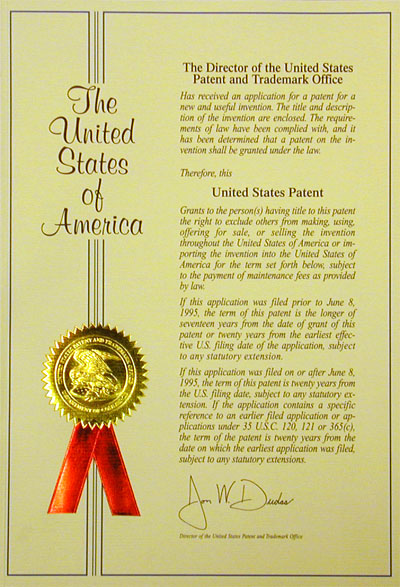The Patent Specification
What Are Its Requirements?

You are already aware that the patent specification is the body of the patent that includes all of the background, summary, detailed description of your invention and the claims. What you may not know about is the peculiar set of rules that define what should and should not be in the specification.
These rules are spelled out in a rather short section of the patent rules at 35 USC § 112 (Patent Specification). When you read them they sound rather straightforward (for something written by congress) but like all laws the history of case law has clarified and redefined what almost every sentence really means. Your patent practitioner is the one who has to deal with the patent specification but you should understand the boundary conditions he/she is operating under. So we will spend a little time here exploring this important topic.
The Rule as Written
35 USC § 112 has six paragraphs. The last five are the rules for claims - the first short paragraph (actually just one sentence) contains the rules for the written description. Let's start out by looking at 35 USC § 112 in its entirety.
35 U.S.C. § 112 [Patent Specification]
- 1The specification shall contain a written description of the invention, and of the manner and process of making and using it, in such full, clear, concise, and exact terms as to enable any person skilled in the art to which it pertains, or with which it is most nearly connected, to make and use the same, and shall set forth the best mode contemplated by the inventor of carrying out his invention.
2. The specification shall conclude with one or more claims particularly pointing out and distinctly claiming the subject matter which the applicant regards as his invention.
3. A claim may be written in independent or, if the nature of the case admits, in dependent or multiple dependent form.
4. Subject to the following paragraph, a claim in dependent form shall contain a reference to a claim previously set forth and then specify a further limitation of the subject matter claimed. A claim in dependent form shall be construed to incorporate by reference all the limitations of the claim to which it refers.
5. A claim in multiple dependent form shall contain a reference, in the alternative only, to more than one claim previously set forth and then specify a further limitation of the subject matter claimed. A multiple dependent claim shall not serve as a basis for any other multiple dependent claim. A multiple dependent claim shall be construed to incorporate by reference all the limitations of the particular claim in relation to which it is being considered.
6. An element in a claim for a combination may be expressed as a means or step for performing a specified function without the recital of structure, material, or acts in support thereof, and such claim shall be construed to cover the corresponding structure, material, or acts described in the specification and equivalents thereof.
As mentioned, The last five paragraphs are the rules for claims - the first short paragraph, contains the rules for the written description. But don't let that short first paragraph fool you - it is loaded with little traps for the unwary - and many practitioners have been caught in those traps. So we will begin in the next article by exploring this little paragraph - particularly that first little phrase - the Written Description.
Links
The Patent Specification (35 USC § 112)
Return to the Top of This Page
The Business of Patents Home Page
Return to Home Page
Patent Law
Return to the patent law page.
Mike Ervin
Mike Ervin - Cost Effective Small Business Patent Protection.
Contact Me
If you have any questions on on this site - please feel free to contact me.